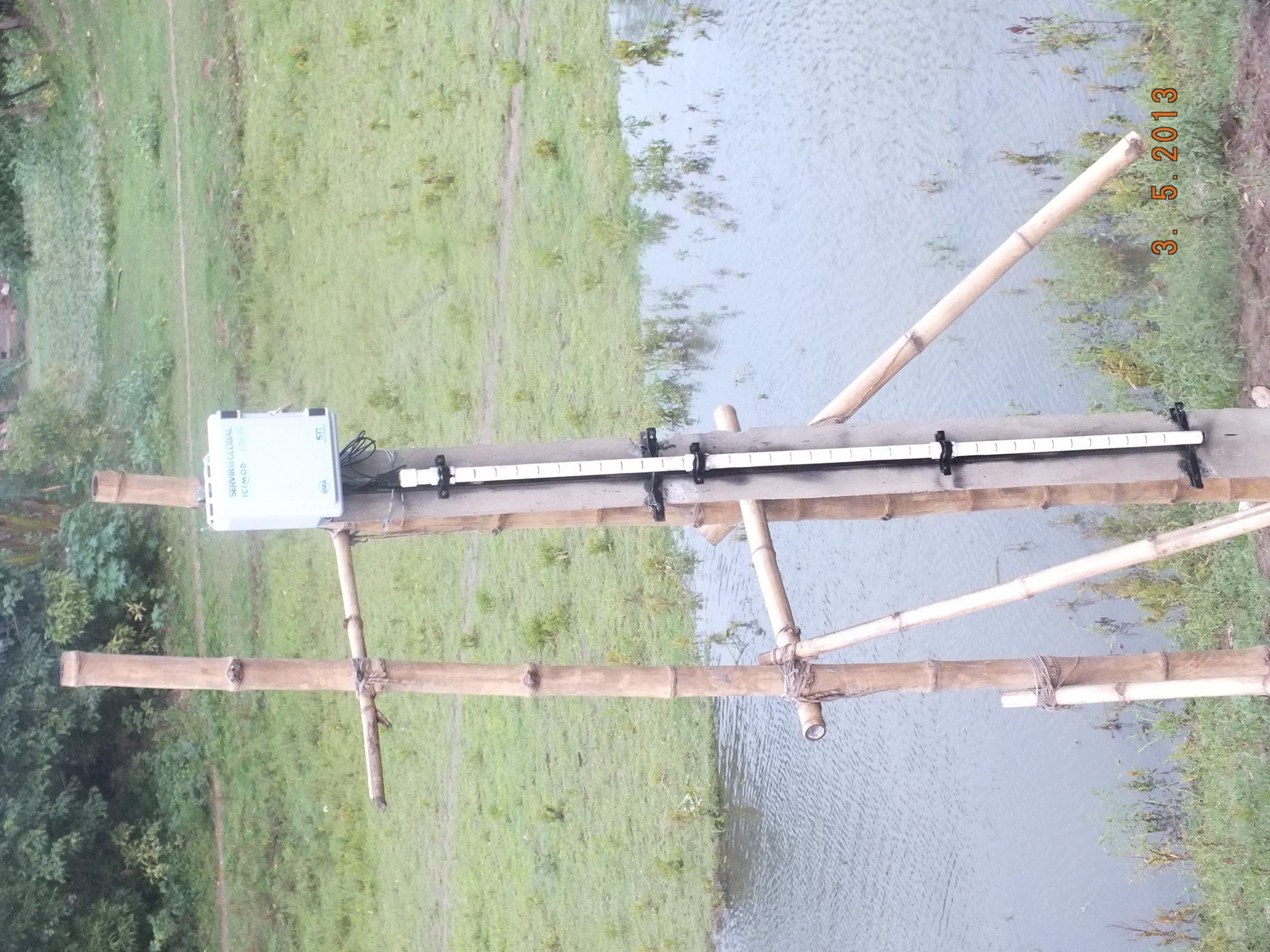The mountains in the Indian state of Meghalaya are the first obstacles encountered by the monsoon clouds as they float into South Asia from the Bay of Bengal. The result is frequent downpours, which often cause flash floods in the plains of northern Bangladesh just below the mountain ridges.
Korchar Haor – a typical wetland in this part of Bangladesh – suffers flash floods once every two to three years. The waters inundate the lone crop that grows only once a year, carries away boats, submerges homes, and causes destruction overall.
The damage can be minimized if people living in the area get some warning before they are hit by a flash flood. The International Centre for Integrated Mountain Development (ICIMOD) is now piloting a project to test flash flood early warning systems based on wireless sensor networks. It is being done in collaboration with the Centre for Environmental and Geographic Information Services (CEGIS) and with technical support from the Universities Space Research Association (USRA) in the US. The pilot project is being implemented under the SERVIR-Himalaya initiative at ICIMOD supported by NASA and USAID.
Most of those who live in the 1,700-odd households in Korchar Haor are farmers or labourers who dig sand and stone from the riverbeds. So they are particularly vulnerable to flash floods. Given its nature, it is difficult to provide a flash flood warning of more than two to three hours. But the residents felt such a warning would at least enable them to save themselves and their boats, and they may even be able to reinforce river embankments. So the first system was set up.
It has worked very well, and there is great potential to scale up the system. There are 22 rivers in northern Bangladesh with a history of flash floods. People living on their banks would all benefit from similar systems.
The flash flood early warning system is designed to sense water levels upstream and at a location near Korchar Haor. When the level rises above the danger mark, it sends out automatic alerts through sirens and text messages on mobile telephones. The system consists of four water level sensors (three upstream and one downstream) that communicate to two concentrators (one upstream and one downstream).
The sensors communicate to one another. However, the failure of one does not jeopardize the functioning of the system as a whole. After receiving information from sensors, the concentrators then communicate data to the central server at CEGIS in Dhaka through GPRS mobile data service. The database management system at CEGIS offers an interface to configure the system and develop visualization scenarios.

One of the main objectives of the pilot was to devise and test a low-cost solution for providing communities with flash flood warnings. It is important that solutions are not only robust, but also affordable for scaling up. The cost of a system with two to three sensors and an alert component is around $1,000, not including recurring costs such as those for GPRS services.
It is expected that after the success of the pilot project, this technology will be taken up by development agencies to decrease the vulnerability of communities in flood-prone areas.
Deo Raj Gurung is a remote sensing specialist at the International Centre for Integrated Mountain Development

